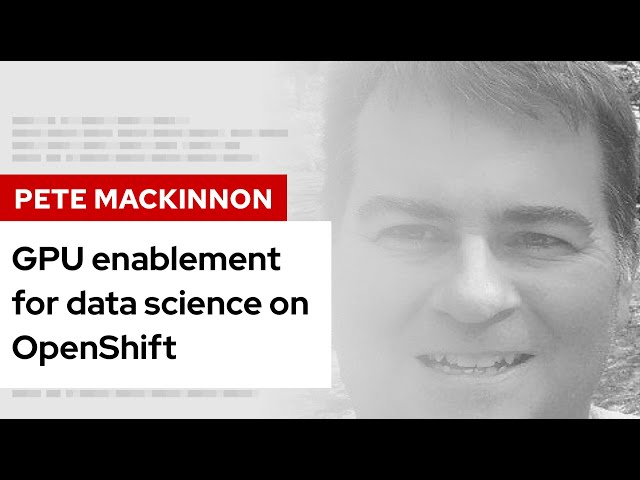
OpenShift 4.5: Bringing developers joy with Kubernetes 1.18 and so much more
Explore the range of Kubernetes 1.18-based technology updates that improve the operational and development experience when using OpenShift 4.5.

Explore the range of Kubernetes 1.18-based technology updates that improve the operational and development experience when using OpenShift 4.5.

Check out the open source Argo CD GitOps Kubernetes Operator for declarative configuration on Kubernetes clusters, now available on Red Hat OpenShift.

Learn the fundamental concepts and benefits of Tekton and then practice using this framework in this KubeCon 2020 CI/CD and Tekton tutorial.

Compare Kubernetes development to OpenShift's CLI and native extension API resources, including build configs, deployment configs, and image streams.

Learn how to use Louketo Proxy as a sidecar to provide authentication for your microservices that are built using multiple languages.

Learn how to experiment with your data models with Kale (a Kubeflow extension using JupyterLab's UI) to convert your notebooks to Kubeflow pipelines.

Learn how to set up your Red Hat OpenShift 4 environment for a Red Hat Advanced Cluster Management (ACM) for Kubernetes installation, and then install ACM.

Explore three options for customizing Open Data Hub or Kubeflow deployments: Edit manifests in a fork, create repositories with overrides, and add overlays.

Explore the new features in OpenShift 4.5 for accessing and managing Helm chart release notes, upgrades, and rollbacks through the OpenShift web console.

Learn how to improve application reliability and uptime in Red Hat OpenShift 4.5 with health checks using readiness, liveness, and startup probes.

Preview OpenShift 4.5's developer goodies, such as creating event sources from the web console, an enhanced OpenShift Pipelines Operator, and unified VMs.

Learn how to build, manage, and load balance clustered environments using subclusters with the Apache HTTP Server mod_cluster module and JBoss EAP.

Are you productive when working on your microservices-based project, or is your laptop on fire? Learn why testing on production matters and how to do it.

Learn how to create an Ansible playbook to automate Quarkus workshop deployment onto an OpenShift 4 cluster with CodeReady Workspaces and Keycloak.

Explore these strategies for building an application in a way that enhances the developer experience, rather than bogging a developer down.

Set up your Red Hat CodeReady Workspaces environment to develop MicroProfile applications using Red Hat JBoss Enterprise Application Platform XP 1.0.

Learn about namespace-scoped and cluster-scoped Operators, and see the difference between the two by migrating from one scope to the other.

Securing distributed software systems might seem more complex than ever, but the working principles of good software security haven't really changed.

Discover Open Liberty 20.0.0.6's new features: Develop "code-first" GraphQL applications, provision features with Maven, and control application startup.

Learn how to install Red Hat JBoss Enterprise Application Platform (JBoss EAP) XP 1.0.0.GA and enable Eclipse MicroProfile support on JBoss EAP.

In part one of this series, learn how to implement multitenancy with a database using the Jakarta Persistence API (JPA) running on WildFly.

A quick introduction to Apicurio Registry 1.2.2's new web-based UI and Operator, which make it easier to store and retrieve service artifacts.

GPU enablement for data science on OpenShift | DevNation Tech Talk

This video walks you through the "why" and "how" of Java in containers, from image sizes to the development and deployment processes.

Jupyter Notebooks for machine learning on Kubernetes & OpenShift | DevNation Tech Talk